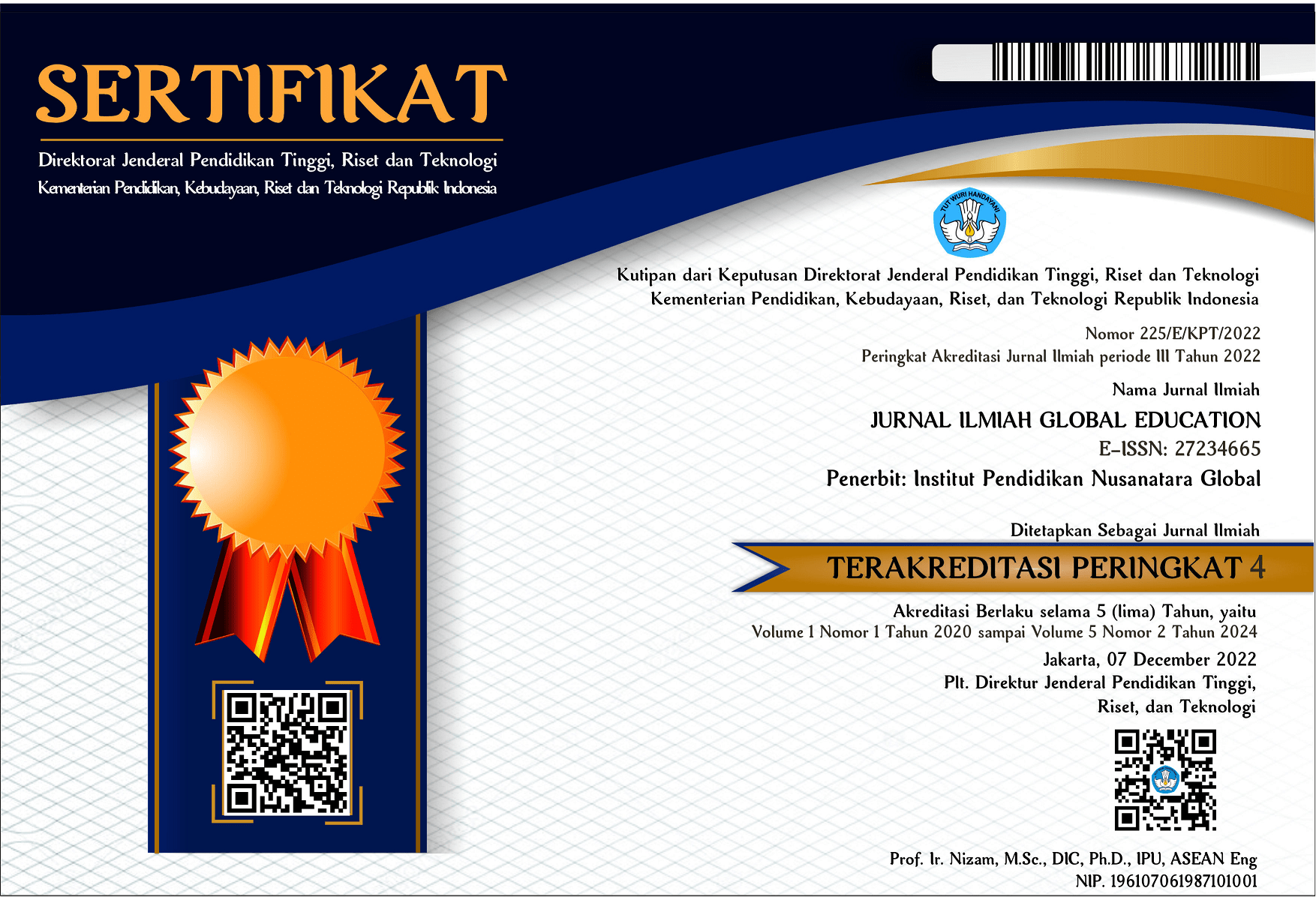POLYSEMIC ANALYSIS OF THE WORD 看 KÀN IN MANDARIN ANALISIS POLISEMI KATA 看 KÀN DALAM BAHASA MANDARIN
DOI:
https://doi.org/10.55681/jige.v4i3.1109Keywords:
Expansion Meaning, Mandarins, PolysemyAbstract
Polysemy is a word that has more than one meaning and each meaning is related in one context and is also listed in the same entry in a dictionary. In Mandarin, the phenomenon of polysemy is also found, one of which is the word看 kàn. This study will describe the extended meaning of the word看 kàn and explain the relationship between the basic meaning and the extended meaning. Data were collected from the novel你是我的荣耀 nǐ shì wǒ de róng yào data source. The data is then analyzed by determining the classification of the meaning of the word 看 kàn and classified according to the type of meaning. Furthermore, this study explains the relationship between the basic meaning and the extended meaning of the word 看 kàn. From the data obtained through data sources, it is concluded that there are 6 extended meanings of the word看 kàn. The extended meanings found are: observe, consider, depend on, visit, diagnose; treat, take care of. Based on the results of the study, all the extended meanings of the word 看 kàn taken from the data source has semantic relationship with the basic meaning.
Downloads
References
Genetti, C. (2014). How Language Work. New York: Cambridge University Press.
Chaer, A. (2019). Linguistik Umum (4th ed.). Jakarta: PT RINEKA CIPTA.
Gapur, A., & Pujiono, M. (2019). Analisis Makna Polisemi Verba Kiru “Memotong” dalam Kalimat Bahasa Jepang. Metalingua. 17(1). 1–12. Retrieved from http://metalingua.kemdikbud.go.id/jurnal/index.php/
metalingua/article/view/264/138
Lyons, J. (1995). Linguistic Semantics: An Introduction. New York: Cambridge University Press
Moleong, L. J. (2012). Metodologi Penelitian Kualitatif (30th ed.). Bandung: PT REMAJA ROSDAKARYA.
Nabila, A. R. (2020). Relasi Makna Verba Hiraku Sebagai Polisemi dalam Kalimat Bahasa Jepang. Skripsi, Universitas Diponegoro. Retrieved from http://eprints.undip.ac.id/80907/1/SKRIPSI_FULL.pdf
Purwani, R. (2020). Polisemi Dalam Bahasa Jawa Dialek Banyumas. Jurnal Ilmiah Bina Bahasa. 13(2). 11-22.
Retrieved from https://journal.binadarma.ac.id/index.php/binabahasa/article/view/1170/641
Semiun, A. (2004). Semantik: Suatu Pengantar Dasar Pembelajaran. Buletin Penelitian Dan Pengembangan. 5. 6–17. Retrieved from https://www.researchgate.net/publication/328271953_Semantik_Suatu_Pengantar_
Dasar_Pembelajaran
Sidiq, U., & Choiri, Moh. M. (2019). Metode Penelitian Kualitatif di Bidang Pendidikan. Ponorogo: CV. Nata Karya.
Wijaya, H., & Wartini, L. S. (2019). Relasi Makna dalam Lirik Lagu Perjuangan Nahdlatul Wathan Karya Tgkh. M. Zainuddin Abdul Majid (Kajian Semantik). Jurnal Pendidikan Bahasa Dan Sastra Indonesia. 2(1). 41–54.
Retrieved from https://e-journal.hamzanwadi.ac.id/index.php/sbs/article/view/1352
Wu, S. Q., Liu, D. L., & Ran, R. (2021). 心理动词“想”的多义性: 基于语料库的行为特征分析. 外语与外语教学. 5. 1–13.
现代汉语八百词 (增订本). (1999). 北京:商务印书馆
现代汉语词典 (7th ed.). (2016). 北京:商务印书馆.
Downloads
Published
How to Cite
Issue
Section
License
Copyright (c) 2023 JURNAL ILMIAH GLOBAL EDUCATION

This work is licensed under a Creative Commons Attribution-ShareAlike 4.0 International License.













